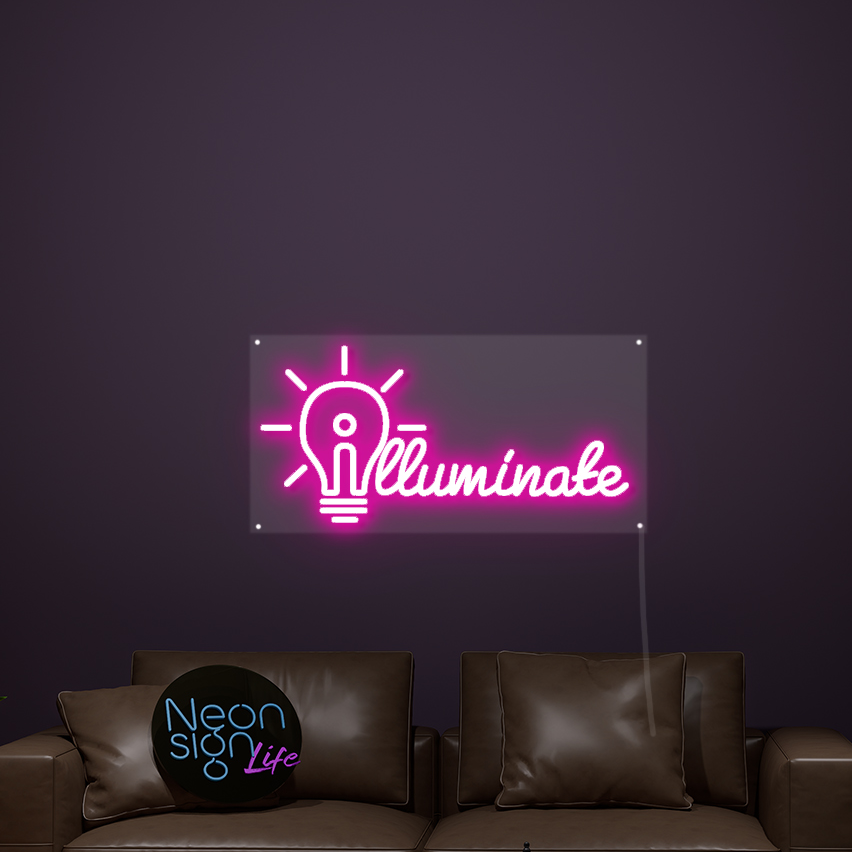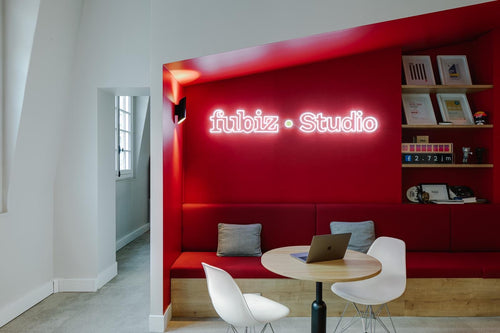In today’s highly competitive retail and service landscape, getting noticed is half the battle. Whether you're running a coffee shop on a busy street, a salon in a crowded plaza, or a local boutique trying to stand out, one truth remains clear: visibility drives traffic. And traffic drives revenue. But how do you stand out when hundreds of other businesses are vying for the same attention?
That’s where custom LED signs come in. These signs aren’t just about flashing lights—they’re about smart, targeted visibility that grabs attention, communicates value, and invites people inside. Unlike static signs or print banners, LED signage can change in real-time, highlight promotions, and stay visible at night or during harsh weather. More importantly, they’re backed by hard data—businesses that install custom LED signs report significant boosts in walk-in customers and sales.
If you're serious about increasing foot traffic and making your storefront impossible to ignore, this solution deserves a closer look.
Custom LED Signs to Boost Visibility & Foot Traffic
In this guide, we will explain how custom LED signs work, what real-world results businesses are seeing, and how you can leverage them to grow your visibility and customer base.
Hook
You’re walking down a busy sidewalk and one storefront snaps into your vision—a sleek custom LED sign glows, alternating brief offers and welcoming messages. Your eyes drift from the storefront across the street with a static vinyl banner—and then pine out. Why the difference? That LED sign made you pause. That’s the core of effective retail marketing today: capturing unplanned attention.
Every storefront competes for a few seconds of someone’s time. Custom LED signs aren’t just bright—they’re purposeful. They grab attention, deliver a targeted message, then close the deal with a visual prompt. This guide breaks down why those few seconds can translate into dollars, with techniques and formulas you can apply even on Day One.
Intro + Problem
Retail and service businesses face two recurring challenges: being seen in an ocean of signs and converting passerby attention into real foot traffic. Traditional signs—painted plywood, static banners, printed posters—do little to stand out in daylight, fade over time, or lose relevance. Digital screens can cost too much, need frequent replacements, and often don’t hold up outdoors.
That leaves storefronts stuck with inefficient methods. They pay rent and utility hoping someone notices. The result: inconsistent traffic, unreliable sales, and wasted marketing spend. With competition fierce, missing out by even 5-10% of pedestrians could cost thousands per week.
Custom LED signs offer a practical alternative. Bright. Programmable. Durable. They operate day and night with consistent visibility, and they aren’t just flashy—they’re data-backed tools businesses are using to improve bottom lines. In this guide, we will explain how to make them work for you.
Case Study: Real Impact of Custom LED Signs
Bright Retail Co. installed programmable LED signs across 25 locations and measured impact before and after. The results were consistent: a 30% increase in foot traffic, conversion, and sales/hour.
Summary Table
| Metric | Before LED Sign | After LED Sign | % Change |
|---|---|---|---|
| Average Foot Traffic | 220/day | 286/day | +30% |
| Passerby-to-Store Conversion | 12% | 15.6% | +30% |
| Sales per Operating Hour | $320 | $416 | +30% |
Survey insights showed 67% of shoppers enter impulsively when a storefront grabs their eye, supporting the 30% gains seen.
This clean, clear impact is enough to persuade any sensible business owner to explore custom LED signs.
Why It Works
Custom LED signs succeed due to several practical factors:
-
High Visibility
LEDs shine bright. They maintain readability indoors or outdoors, even under direct sunlight. Visibility range extends up to 500+ feet—roughly 2–3× that of static signage. -
Dynamic Messaging
Programmable content enables rotating messages: store name, promotions, services, or local info. This freshness catches the eye and encourages rechecks. -
Emotional & Rational Triggers
Visual cues like “SALE NOW,” timed offers, or animated effects create urgency and curiosity. Seeing active deals makes people take action—and often immediately. -
Night & Low-Light Optimization
LED signs light up evening crowds. Bright Retail Co. saw a 38% evening foot traffic increase post-installation. -
Long-Term Cost Efficiency
LED modules last 50,000–100,000 hours (6–11 years). No printing costs. Content updates happen digitally, saving on materials. Over time, cost per customer interaction drops significantly.
Rather than flashy gimmicks, these signs work through sustained visibility, message freshness, and technical durability.
Design & Placement Best Practices
A great LED sign is more than just bright—it’s thoughtfully designed and positioned. Here’s what works:
-
Message Clarity
-
Stick to 3–5 simple words: e.g., “20% OFF ALL DAY,” “OPEN NOW,” “NEW ARRIVALS.”
-
Big, bold fonts; easy contrast (e.g., white on black).
-
Avoid clutter—readability matters even to fast-moving passersby.
-
-
Color & Brightness
-
Use high-contrast, attention-grabbing color schemes (red, green, yellow, white on dark).
-
Set brightness schedules: full power in daylight, dimmed at night (30–50%).
-
Dimming saves energy and ensures signs aren’t glaring.
-
-
Animation Style
-
Keep it simple: fade-ins, scrolls, occasional blinking.
-
Limit movement to avoid distraction: message switches every 5–10 seconds.
-
Avoid fast, flashy graphics—good for attention, bad for message retention.
-
-
Positioning & Angle
-
Mount at 5–7 ft from ground for eye-level readability.
-
Angle toward pedestrian flow or vehicle traffic.
-
Ensure nothing—awnings, poles, trees—obstruct the view.
-
-
Letter Height & Viewing Distance
-
Rule: 1" letter height per 10 ft viewing distance.
-
For signs 30 ft away, use 3"+ letters.
-
Adjust sign size based on typical traffic path.
-
-
Compliance & Permits
-
Check zoning regulations: brightness limits, hours of operation, animations.
-
Some areas ban flashing lights; others require auto-off by 10 PM.
-
Bright Retail Co. secured permits covering brightness, size, and message limits—ensure you do the same.
-
ROI Breakdown: How Much Will You Earn?
Let’s break down expected earning power. Adjust numbers to fit your situation:
Example Assumptions:
-
Sign cost: $3,000
-
Foot traffic boost: +30% (+50/day)
-
Conversion rate: 15%
-
Average sale per customer: $25
-
Working days/month: 26
Daily Revenue Increase:50 extra visitors × 15% conversion × $25 = $187.50
Monthly Revenue Increase:$187.50 × 26 = $4,875
Payback Period:$3,000 ÷ $4,875 ≈ 0.62 months (~18 days)
Even with more conservative estimates—
-
20% traffic lift
-
12% conversion
-
$20 average sale
you still generate around $1,248/month revenue uplift, recoup investment within 3 months.
Fact Table: ROI Scenarios
| Scenario | Traffic Lift | Conversion | Avg Sale | Monthly Gain | Payback |
|---|---|---|---|---|---|
| Base | +30% | 15% | $25 | $4,875 | <1 mo |
| Conservative | +20% | 12% | $20 | $1,248 | ~2.5 mo |
| Worst-case | +15% | 10% | $15 | $585 | ~5.1 mo |
Even worst-case is compelling for many businesses.
Actionable Steps to Get Started
Step‑by‑step guide to implementation:
-
Partner with Local Vendors
-
Look for certified LED installers.
-
Ask for performance data and long-term warranty (3–5 years).
-
-
Define Your Messaging Strategy
-
Pick 3–4 rotating messages: e.g., “WELCOME,” “SALE 20% OFF,” “NEW ARRIVALS.”
-
Include brand name or logo where allowed.
-
-
Measure Existing Visitor Traffic
-
Use manual counts or footfall sensors for a baseline (2 weeks minimum).
-
-
Select Sign Size & Mount Location
-
Measure storefront width, sightlines, viewing distance.
-
Use the letter-height rule.
-
-
Obtain Permits
-
Consult with local city/municipal code enforcement.
-
File applications with size, brightness, and content details.
-
-
Install & Configure the Sign
-
Choose brightness schedule, day-part message display.
-
Program the message rotation.
-
-
Track & Compare Results
-
Count foot traffic, conversion, sales over 8–12 weeks post-install.
-
Compare to baseline numbers.
-
-
Refine Messaging Based on Data
-
Use A/B messaging: test “20% OFF” vs. “Sale Today.”
-
Drop messages that underperform.
-
-
Maintain & Update Regularly
-
Replace LEDs as needed.
-
Update content seasonally or for holidays.
-
-
Scale Up
-
Once ROI is proven, repeat sign installations in other locations or upgrade to larger displays.
-
Common Misconceptions & Answers
Q: “LED signs are too expensive for small businesses.”
A: Entry-level signs range $2,000–5,000. Since ROI is typically under 3 months, they pay for themselves quickly and continue generating revenue after that.
Q: “We lack the skills to update content.”
A: Most modern LED systems offer user-friendly apps or web dashboards. You select a message, choose times, and click save. No design expertise required—prebuilt templates included.
Q: “Everyone has LED signs—won’t ours get ignored?”
A: Not if your messaging is unique, simple, and localized. Contextual content (“Sale Today,” “Hot Coffee Now”) resets customer expectations every glance.
Q: “LED signs consume too much energy.”
A: Typical panels use 30–50 watt/sq ft. Operating 12 hours/day at $0.10/kWh costs around $2–5/month. Compared to revenue gain, that’s negligible.
Q: “Aren’t they too flashy or distracting?”
A: With proper programming—no flashing, slow transitions—they enhance, not distract. They direct attention in a way that leads to action, not annoyance.
Conclusion
In today’s competitive marketplace, standing out isn’t optional—it’s essential. Custom LED signs provide a practical, cost-effective way to increase visibility, attract foot traffic, and drive revenue growth. Unlike traditional signage, LED signs offer dynamic, real-time messaging, superior brightness, and long-term durability, making them ideal for both day and night use. Businesses across sectors have seen measurable improvements in walk-in customers, conversions, and sales after installing custom LED signs. With ROI achievable in as little as one month, the investment pays for itself rapidly while continuing to deliver returns for years.
From choosing the right message to strategic placement and maintenance, every aspect of LED sign use can be optimized for maximum impact. Whether you run a café, salon, retail store, or service center, integrating custom LED signage can transform how potential customers perceive and interact with your storefront.
If your business is ready to move beyond outdated marketing tools and truly shine—literally and figuratively—custom LED signs are the proven solution.
In this guide, we explained the why, how, and real-world success of LED signage, empowering you with everything you need to get started confidently.




